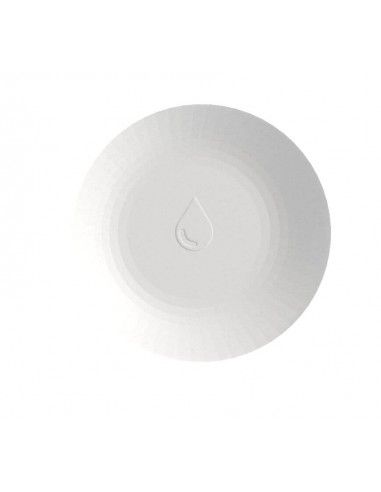En oberoende tjänst som hjälper dig jämföra produkter, priser och återförsäljare online. Jämför pris på kök. Hitta rätt produkt till rätt pris.
There is no doubt that this is the age of wireless. From mice to doorbells, cameras to computers everything seems to connect without the hassle of hooking up cables or tripping over wires.
Se hela listan på dronebotworkshop. Each of them has its own advantage and disadvantage and as adding wireless communications will add to the cost of your product you need to think carefully before implementing anything. Bluetooth is often the first choice that comes to mind. You can create a custom app to give your project a real professional look, equivalent to anything you can buy commercially.
It also requires you to build an app which may be more than you want to take upon yourself. You’ll also need to pair it with your device, although that isn’t particularly difficult. WiFi is another good choice, using WiFi will allow your project to interact with all of the devices on your existing network.

These modules are available on eBay, Amazon and a myriad of other places. They can often be obtained for less than two dollars for the pair, making them one of the most inexpensive data communication options that you can get. One of the reason for their low cost is that these modules are used in many electronic toys, games and also in key fobs for automobiles. They are manufactured by the millions and this keeps their cost to an absolute minimum. The remaining connection is for data in on the transmitter and data out on the receiver.
We’ll discuss antennas in a moment but before we do it’s vital that we talk about the legalities of usi. Frequency Shift Keying or FSK. The modules both have a connection for an external antenna.
In this method the digital signal modifies the frequency of the carrier wave. This is similar to Frequency Modulation or FM radio. Phase Shift Keying or PSK. This works by modifying the phase of the carrier in response to the input signal.
Many modems work this way. Amplitude Shift Keying or ASK. Because these modules are very simple we will use ASK.
Digital – This drives the carrier at full strength. In fact without an antenna you’d be lucky to communicate over a distance of more than a meter. Some users have reported being able to communicate over a distance of meters with the proper antenna design. Of course that is outdoors in an open space. Your range indoors, especially through walls, will be significantly diminished.
The length of the wire does matter however, as it does for all radio devices. The antenna need not be anything fancy. Rather than using a random length of wire you should use one that is an even fraction (i.e.one half or one quarter) of the wavelength of the signal you’re sending.
We are using a frequency of 433MHz in our modules. One wavelength at 433MHz is 69. Now that we have discussed our modules it is time to put them to use! In our first experiment we will just send a canned message from the transmitter to the receiver. While this isn’t extremely useful it does serve to illustrate how to use the modules and can serve as the basis for more practical experiments and projects.
It’s also a great way to see if our antenna design is sound. Our first demonstration showed how we can send and receive data using our small modules. Now let’s do something a bit more practical. In our second demonstration we will use a temperature and humidity sensor with our transmitter. We’ll take readings from the sensor and transmit these to our receiver where we will display them on the serial monitor.
It is a practical application. There are a couple of great things about this demonstration: 1. You can use it to measure the temperature in a remote location like your basement or attic. With the right enclosure you could even use it outdoors. It shows you one method of sending more than one piece of information over the radio link. In this demo we send both temperature and humidity values.
You can use the technique for transmitting multiple chunks of data for other applications and sensors. Keep in mind that you could also use this technique to transmit the value of the anaputs as well, so if you want to build a wireless joystick it shouldn’t be hard to modify the sketch to do exactly that. So what will you build with your wireless link?
Have you discovered any methods of (legally) increasing the range, perhaps a “super antenna”? Let us know in the comments. Thanks for tuning in!
MHz RF receiver module receives data in the form of ASK modulated form. To demodulate it an internal program can help. It uses low costs RF transmitter and receiver from Electronics-DIY. MHz radio modules are modules which can communicate using the 433MHz frequency band. It work like any wireless systea system using these modules is composed of an transmitter and a receiver.
They're massively used in system like garage door, wireless doorbell, etc. MHz modules use the VirtualWire Library. The RF module in both sections has an antenna. They should say the operating RF either in the product page or in the label.
The library comes with several sketch examples. Avkodar samma protokoll som Nexa använder. MHz Transmitter is one of the oldest RF transmitters and it has a lot of applications and examples on the internet which helps to achieve the interfacing with almost every application.
In IoT, RF Module helps to communicate between two devices. Arduino boards up to 5ft. Car security systems come up with RF Transmitter. MHz Sender (oben) und Empfänger (unten).


Inga kommentarer:
Skicka en kommentar
Obs! Endast bloggmedlemmar kan kommentera.